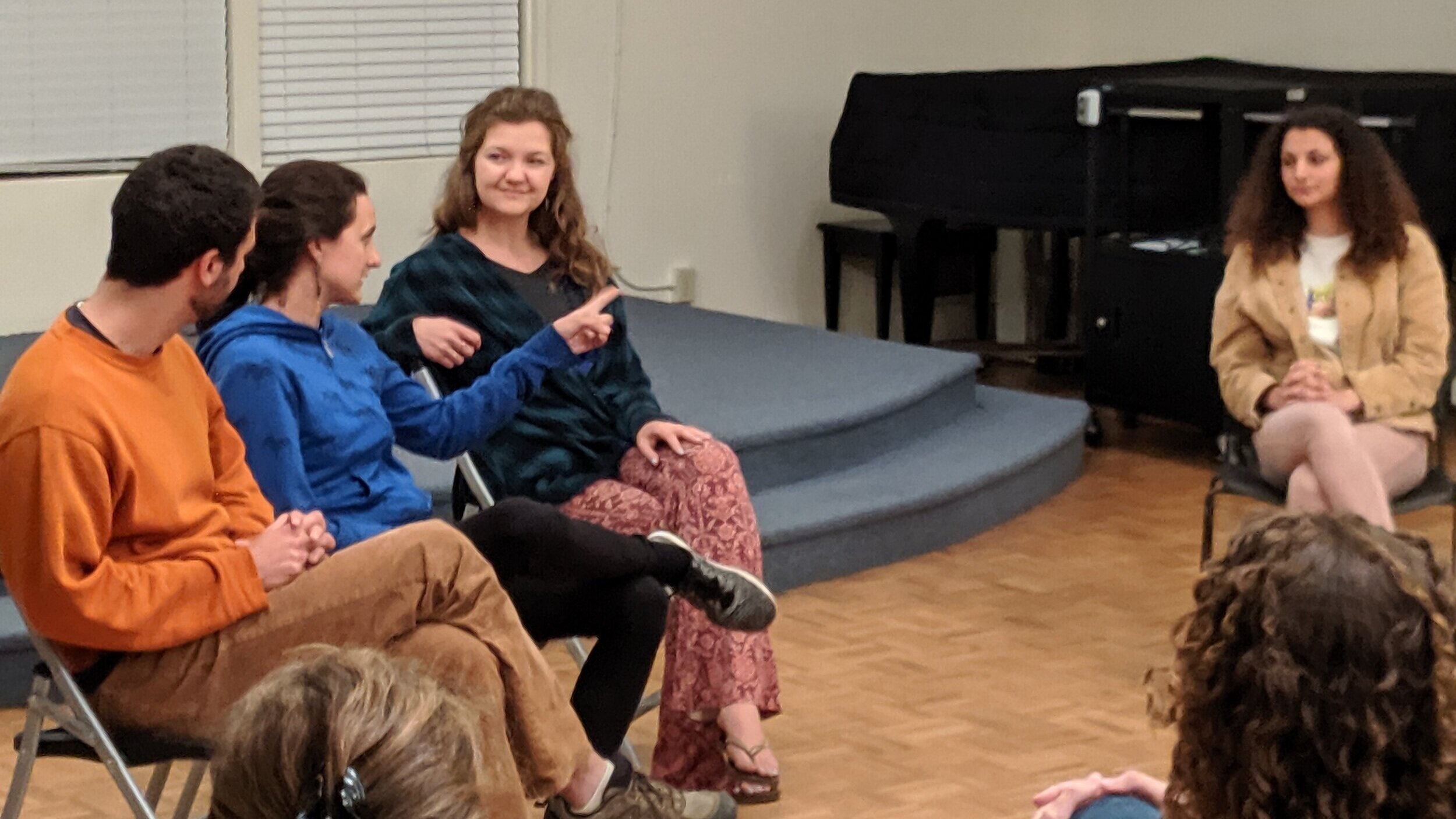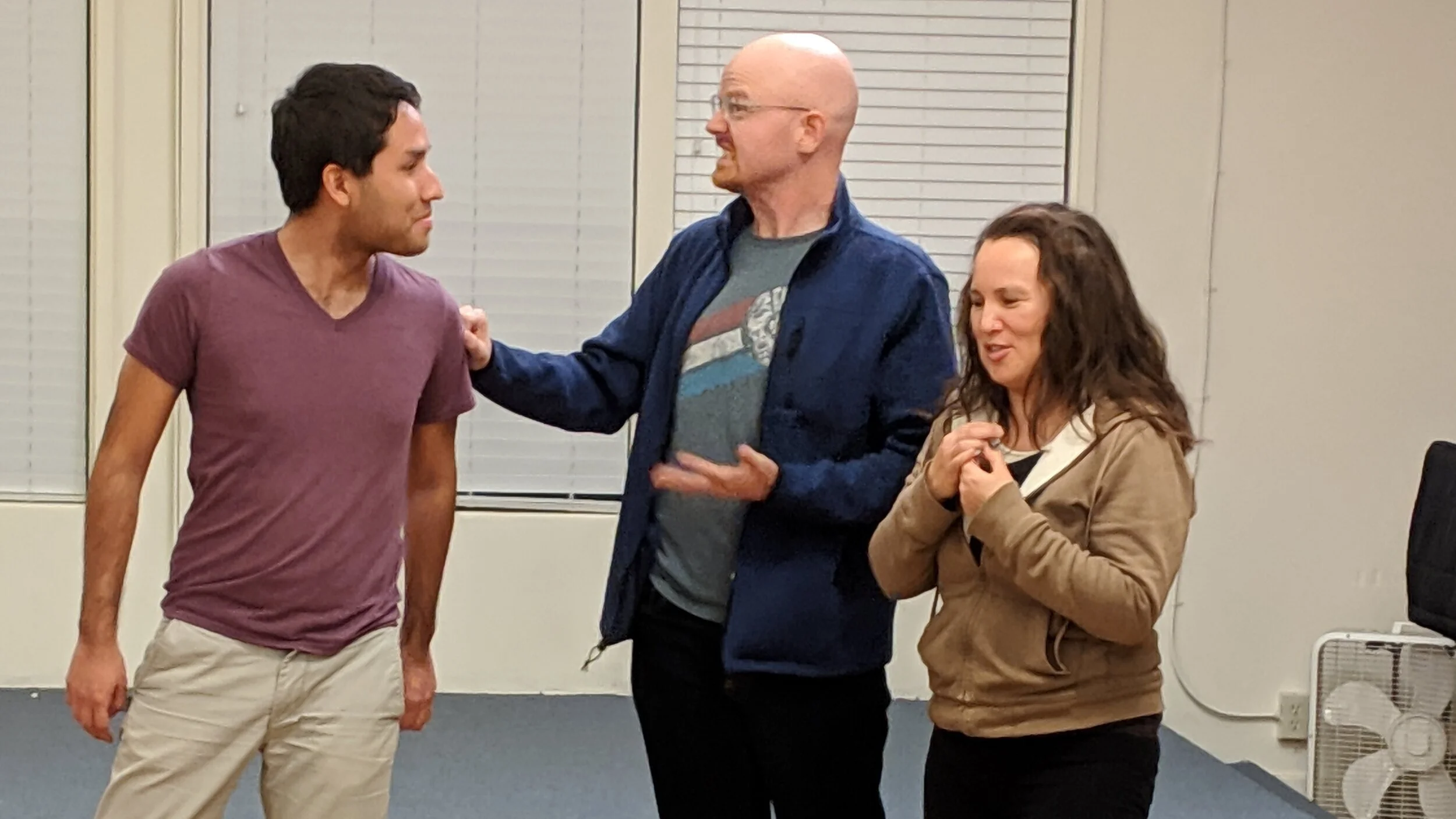Number of players: 3 or more Tags: Exercise, large group, warm up, cool down, all levels
When: This is a large group warm-up exercise and a large group cool down exercise.
Overview: A series of short, two person scenes is performed, and the transition between scenes occurs when a player outside of the current scene calls "freeze" and then replaces one of the performers. Poses are held through the freeze, and the new player assumes the pose of the replaced player. Each scene is independent of the previous scene, the only influence being the physical pose at the time of the freeze.
Introduction: "This will be a series of short, two person scenes. At any time, two people will be playing their scene in the middle and someone on the outer circle will yell 'freeze.' At that point the performers freeze in their current positions. The freezer steps up to one of the previous performers and taps him or her on the shoulder. The tapped out person will go back out to the circle, the person entering assumes the pose, and then that new player also starts a new scene. The new scene must justify the poses of both players. Once the who, what, and where are portrayed, then someone else in the circle can yell 'freeze' to start a new scene. These are meant to be short scenes, so get the who, what, and where out quickly."
"Also, do not wait to freeze a scene only when you have a new scene in mind. The idea is to freeze on an interesting pose and wait until you get into that pose before you come up with a scene. Let the physical pose inform the scene."
Details: The entire class forms a circle, and the introduction is given. During the introduction, the director will get two players into the middle of the circle. After the introduction, these two will immediately start a short scene. They will be interrupted by someone else in the group who shouts "freeze". The two players instantly stop the scene, freezing in their current positions. The player who yelled "freeze" steps up to either of the two players, taps that player out, and assumes the player's pose. The tapped out player goes back out to the circle. The new player will start a new scene with new characters and will justify the position of the characters. After a short time, another player in the outer circle will yell "freeze" and the cycle will repeat.
Each scene is meant to be short, just getting out the who, what, and where. If the scenes are going too long, I will tell everyone to get to more freezes. If I see some reluctant players, I'll freeze the current scene and call out the reluctant player to step in and start a new scene as if they were the one who yelled "freeze."
Occasionally, two people will yell "freeze" at the same time. We've taken to calling this a double freeze, and both of the freezers step forward and take over the two existing poses, tapping out both of the previous performers. Either of the new players can start the new scene.
Variation 1: Break the entire class up into groups of three. These groups are spread around the classroom. Now, freeze tag will always have 1 person not doing the scene who is obviously the next freezer. This forces everyone to participate and a player can only sit out one scene before they have to go back in.
Variation 2: The entire class lines up with their backs against a wall except for the first two in line who turn to face the wall. Two players are in the open area where most of the other players are facing, and they start off performing a short scene. The third person in line (after the two facing the wall) will yell "freeze" when the performers are in an interesting pose. At that point, the first person in line will turn out and quickly move towards the frozen performers. That player immediately taps one of the two performers out, assumes that players pose and starts a new scene. The tapped out player runs to the end of the line. Everyone in line takes a step towards the front of the line, the person who yelled "freeze" now turns towards the wall, and the new third person in line watches for a freeze. Repeat until everyone has had a chance to start a new scene.
This variation is sometimes called "Double Blind Freeze Tag" because the player who has to start a new scene hasn't seen the previous two scenes and has no preconceived notion of what they are stepping into.














